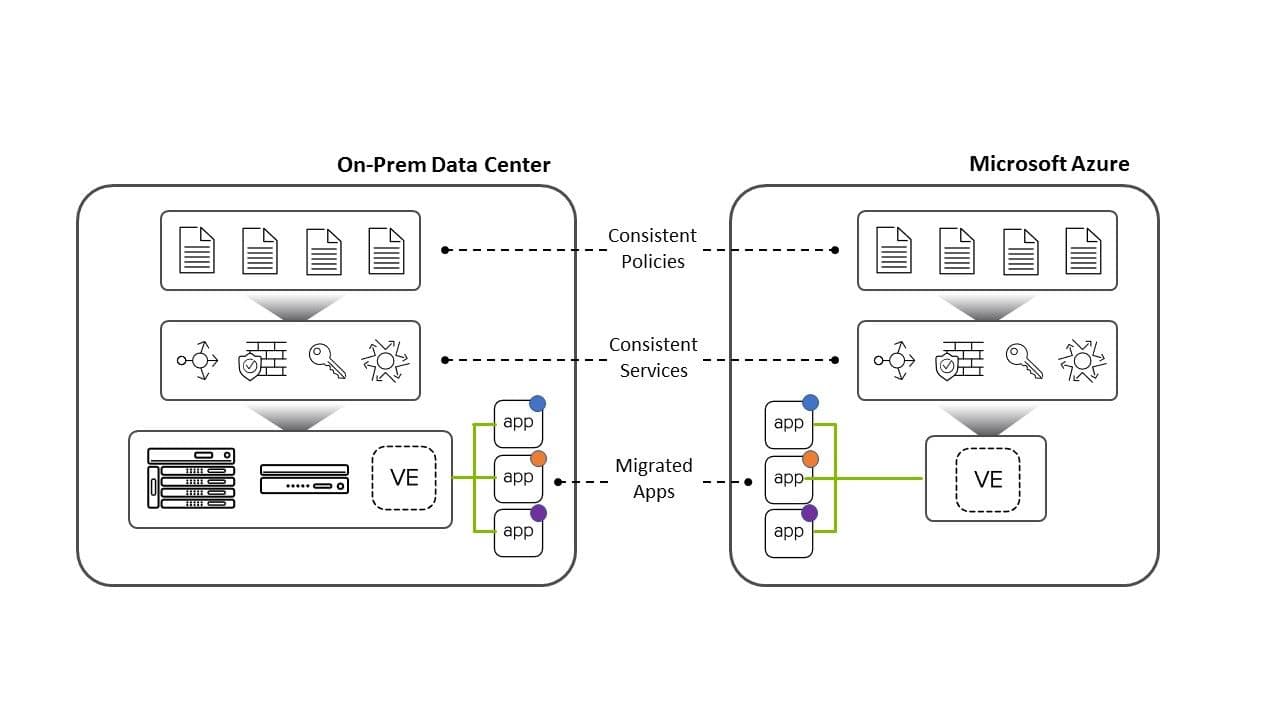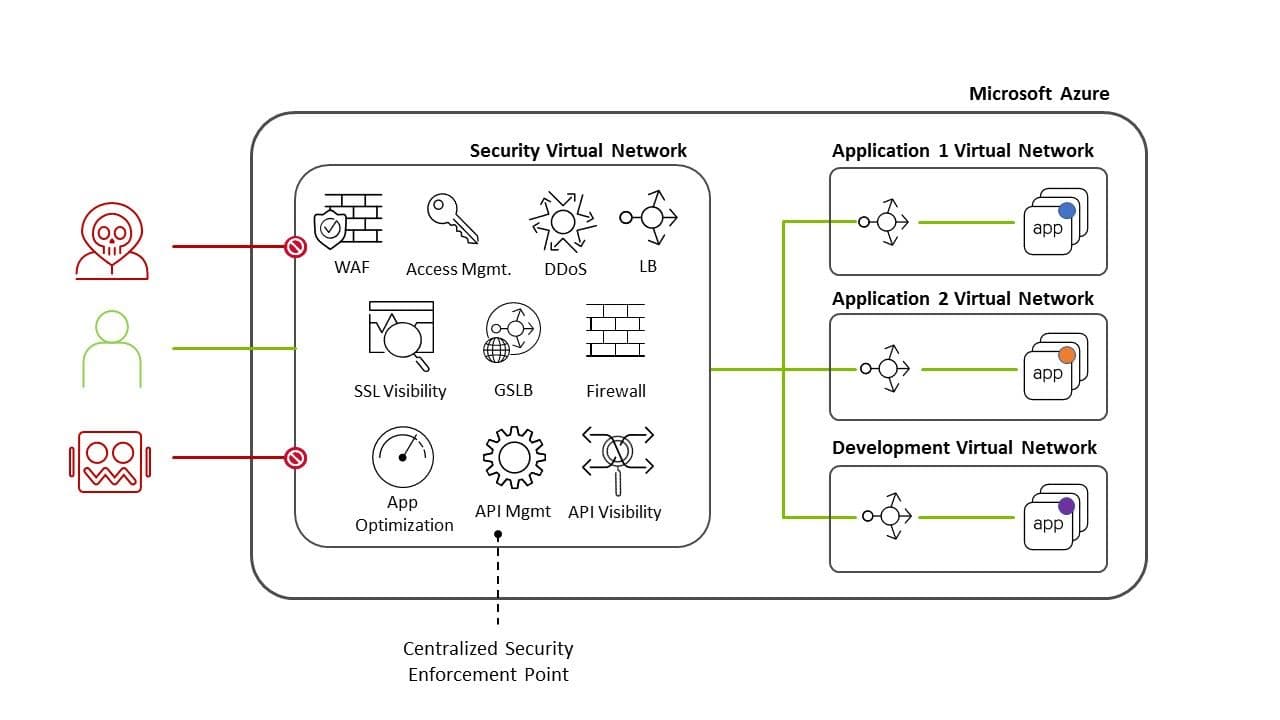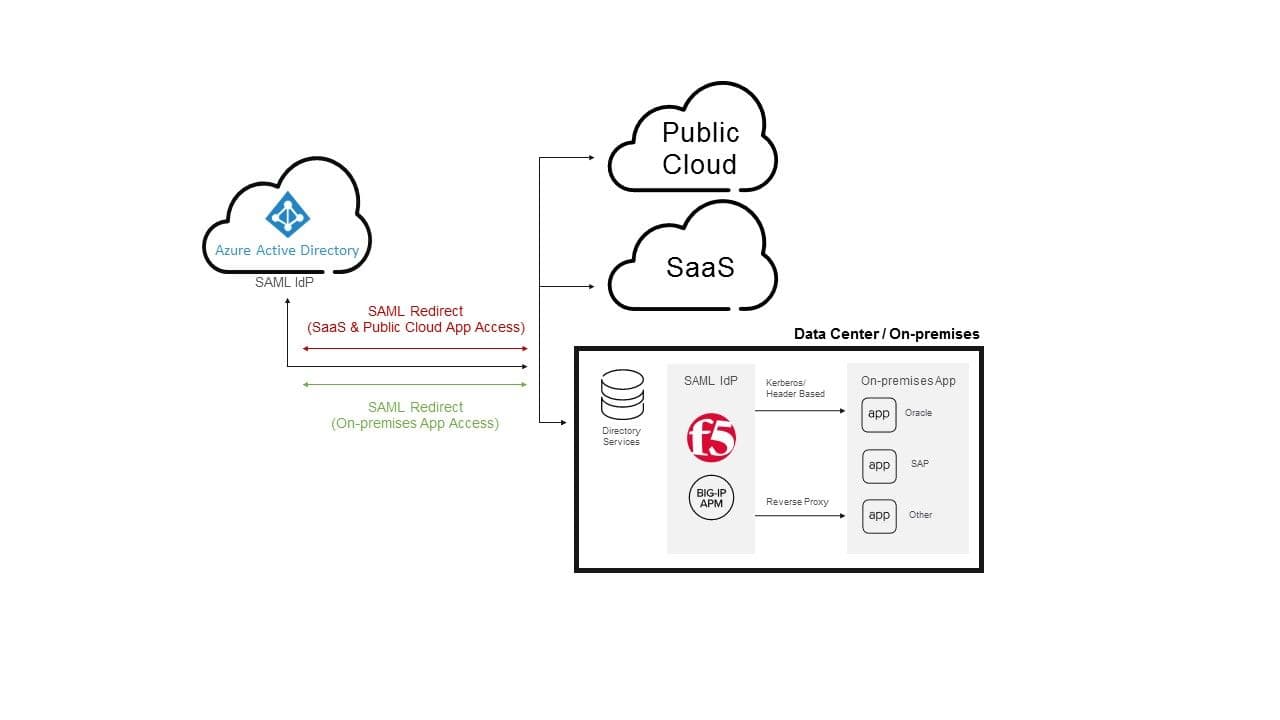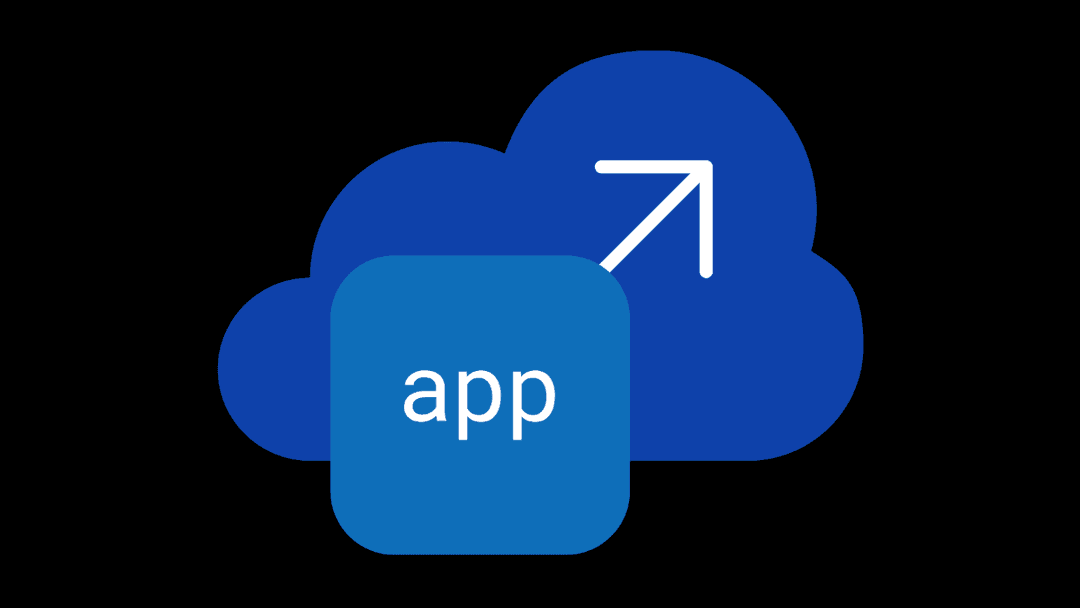For the vast majority, the attraction to public cloud computing lies within the unrestricted ability to do pretty much whatever you want, whenever you want (within reason of course). It’s this freedom that makes all cloud journeys unique and often complicated; each comprising very different objectives, strategies, and hurdles to overcome. While some are still getting their feet wet making that first foray into the cloud, others are charging full steam ahead—expanding into multi-cloud architectures and modernizing existing cloud applications to embrace automation and native services. Bearing this in mind, let’s take a look at how F5 can help you and your applications wherever you are in your cloud journey.
1) Getting Your Apps to Azure
Just whispering the word ‘migration’ is often enough to strike fear into the hearts of those responsible for the day to day operations of a company’s data center applications. Uprooting applications that have in many cases remained untouched for years on end, and replatforming them within the cloud, reconfiguring their supporting network infrastructure while also implementing unfamiliar application services is by no means trivial.
This difficult transition could be eased however by also migrating part of that applications support network—it’s application services—with it, in doing so providing security and performance consistency (kind of like offsetting the misery of your kid’s first day at kindergarten by letting them take their beloved snot-covered blanket ). With F5, whether you’re migrating an app to Microsoft Azure or other cloud environments that app can reuse those same services, policies, and iRules it’s accustomed to—lessening your cloud learning curve and accelerating the migration process.

More information about the importance of policy consistency when migrating apps is available here.
2) Modernizing Your Apps on Azure
Migrating an app is one thing, but modernizing an app is a whole different kettle of fish entirely (excuse the British metaphor), typically involving rearchitecting an app to make it ‘more-cloudy’ and fully exploit the cloud’s capabilities. That might mean transforming a legacy application to run within a Kubernetes cluster, automating processes through integration within CI/CD pipelines, or implementing autoscaling functionality to optimize your operational costs. However you’re modernizing, F5’s portfolio of application services can help facilitate your modernization efforts, and then keep your app secure and performant going forward. Here’s a selection of ways F5 can help streamline your modernization efforts:
3) Protecting Your Azure Apps
While Microsoft does a great job securing Azure’s underpinning infrastructure and network, those security defenses account for nothing as far as your apps and data are concerned; protecting your apps is entirely your responsibility. And that task is becoming more difficult by the day as applications are exposing more entry points, multiplying like bacteria, and being deployed faster than ever before by developers (sometimes without any security consideration at all), making it nearly impossible to ensure every app goes out with the appropriate security controls.
Partnering with F5 allows you to make a strategic security investment to consistently protect every application running on Azure, as well as those you may operate across other components of your multi-cloud architecture. No matter what form a cyberattack may take—whether that be an injection attack, automated botnet or resource crippling denial-of-service attack—you’ll be able to take comfort in the knowledge that F5 will detect it, block it, and log it. And by enforcing a centralized point of security control at the core of your cloud architecture, you’ll enable secure innovation at the edge—inhibiting developers from circumventing security procedures in their pursuit of speed and agility.

Learn more about Web App & API Protection from F5.
4) Securely Accessing Your Azure (and Hybrid) Apps
It’s estimated that the average enterprise now uses between 500 and 1,000 apps to facilitate their business operations, most of which are usually sprawled across some sort of hybrid architecture spanning public clouds, private clouds, colocation facilities and private data centers. Providing access to those apps in itself is no easy feat, and this difficulty is further compounded by the need for users to access those apps from a myriad of locations and devices. Furthermore, some older, legacy apps may not support modern authentication and authorization processes, making the implementation of a consistent access experience across a company’s app portfolio increasingly challenging.
Working together, Microsoft and F5 have the answer: By deploying Azure Active Directory—Microsoft’s comprehensive cloud-based identity platform—along with F5’s trusted application access solution, Access Policy Manager (APM), organizations are able to federate user identity, authentication, and authorization and bridge the identity gap between cloud-based (IaaS), SaaS, and on-premises (legacy) applications that may or may not support modern authentication standards, like SAML or OAuth, and may likely not support single sign-on (SSO) or multi-factor authentication (MFA). Regardless of where the application lives, or whether or not it supports modern authentication standards and methods, this collaborative solution allows users to log in once and securely access all applications they have the right to access, from any location.

More on this F5 and Microsoft solution is available in this article composed by F5’s John Morgan (VP & GM, Security Business Unit), or for those of you heading to Ignite feel free to attend Microsoft and F5’s breakout session on this joint solution: Modernize your hybrid environment with Azure Active Directory (BRK3108) on Thursday at 9:00 a.m. ET.
Finally, if you’ve found something above that’s piqued your interest and are planning on attending Microsoft Ignite next week, then do please stop by F5’s booth (#1231) where myself and my fabulous colleagues will be eagerly waiting to dive deeper with you.
About the Author

Related Blog Posts

AppViewX + F5: Automating and orchestrating app delivery
As an F5 ADSP Select partner, AppViewX works with F5 to deliver a centralized orchestration solution to manage app services across distributed environments.

Build a quantum-safe backbone for AI with F5 and NetApp
By deploying F5 and NetApp solutions, enterprises can meet the demands of AI workloads, while preparing for a quantum future.

F5 ADSP Partner Program streamlines adoption of F5 platform
The new F5 ADSP Partner Program creates a dynamic ecosystem that drives growth and success for our partners and customers.
F5 NGINX Gateway Fabric is a certified solution for Red Hat OpenShift
F5 collaborates with Red Hat to deliver a solution that combines the high-performance app delivery of F5 NGINX with Red Hat OpenShift’s enterprise Kubernetes capabilities.
F5 Silverline Mitigates Record-Breaking DDoS Attacks
Malicious attacks are increasing in scale and complexity, threatening to overwhelm and breach the internal resources of businesses globally. Often, these attacks combine high-volume traffic with stealthy, low-and-slow, application-targeted attack techniques, powered by either automated botnets or human-driven tools.
Phishing Attacks Soar 220% During COVID-19 Peak as Cybercriminal Opportunism Intensifies
David Warburton, author of the F5 Labs 2020 Phishing and Fraud Report, describes how fraudsters are adapting to the pandemic and maps out the trends ahead in this video, with summary comments.
